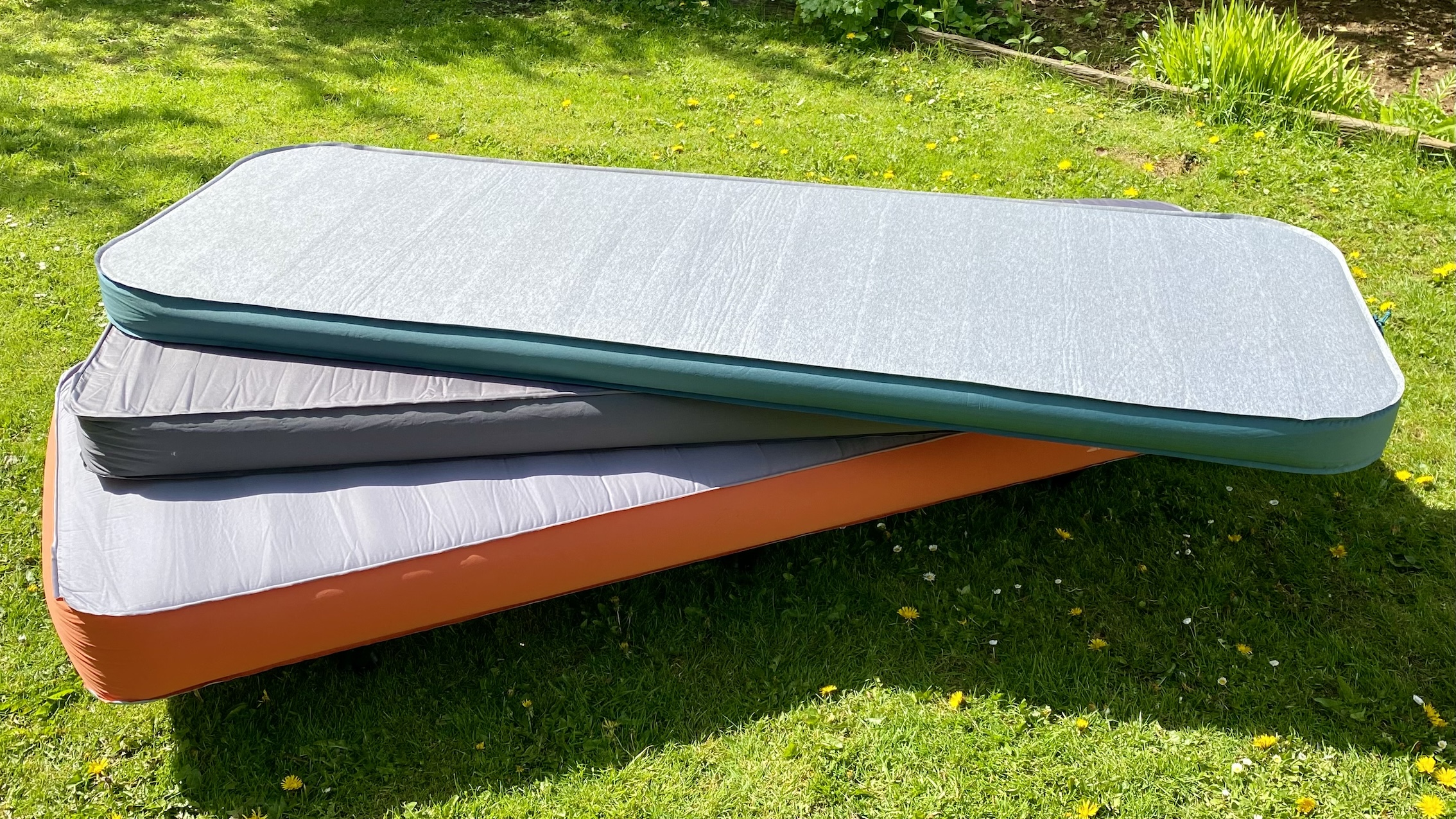


As mentioned in our three-way camping cot comparison, I’ve recently been searching for the very best sleeping solutions for a perfect night’s sleep under the stars and have come to the conclusion that it starts with an air bed.
But not your average run-of-the-mill Lilo-type airbed with its lumpy, wallowing surface and thin vinyl construction. I’m talking about a much more reliable and comfortable solution – a self-inflating mattress.
While much more expensive to buy, a self-inflating air mattress’s construction is radically different from that of a conventional air bed because, instead of just air, it’s also filled with expanding foam that adds extra cushioning for support and comfort without feeling too wobbly.
For this particular showdown, I chose three single-person models from outdoor gear producers Quechua, Coleman, and Vango and tested each one overnight.
Which self-inflating mattress comes out on top? Let’s find out.
Quechua Ultim Comfort vs Coleman Supercomfort vs Vango Shangri-La II Grande: the battle of self-inflating mattresses
What’s wrong with a conventional air bed?
Normally I’ve always used a standard air bed and it’s true that once you’re on an air bed that isn’t overfilled and the bed has some kind of pad on top, it’s actually very comfortable. However, air beds do have several major issues that can totally ruin a camping trip and perhaps put you off camping for life.
Firstly, air beds are normally placed directly on the ground above a thin groundsheet. Since the air bed is full of, er, air and that air is directly in contact with the cold ground, it doesn’t take a degree in rocket science to deduce that the air in the bed will eventually adapt to the ground and air temperature around it. And no amount of body heat will make a blind bit of difference to the falling temperature of the bed. You will just get colder and colder as the night wears on.
Sign up to the T3 newsletter for smarter living straight to your inbox
Get all the latest news, reviews, deals and buying guides on gorgeous tech, home and active products from the T3 experts
Of course, there are effective ways around this by placing the bed on a blanket, with another blanket on top of the bed for good measure. This will certainly help with insulating the bed from the cold ground and make for a much better night’s sleep.
But poor insulation isn’t the only thing I dislike about standard airbeds. Perhaps far worse is their propensity to easily puncture if placed on top of a protruding stone or a sharp dried grass stem. You also have to be very wary about letting a dog on the bed lest a claw penetrates its thin vinyl veneer, and, poof, there goes the bed. A slow puncture is almost worse because there’s no sign of it when inflating.
Twice now, I’ve woken up in the middle of the night with my bum on a hard, gnarly floor, and there’s not much I could do about it short of reaching for a loud air pump and waking everyone within earshot.
There’s more. When you first get on an air bed, the whole thing wallows like a trampoline while making an annoying ruffling noise. And because the bed is so low on the ground, it’s just as hard to get off it in the morning. Lots of reasons, then, why standard airbeds mostly suck.
What’s so good about a self-inflating air bed?
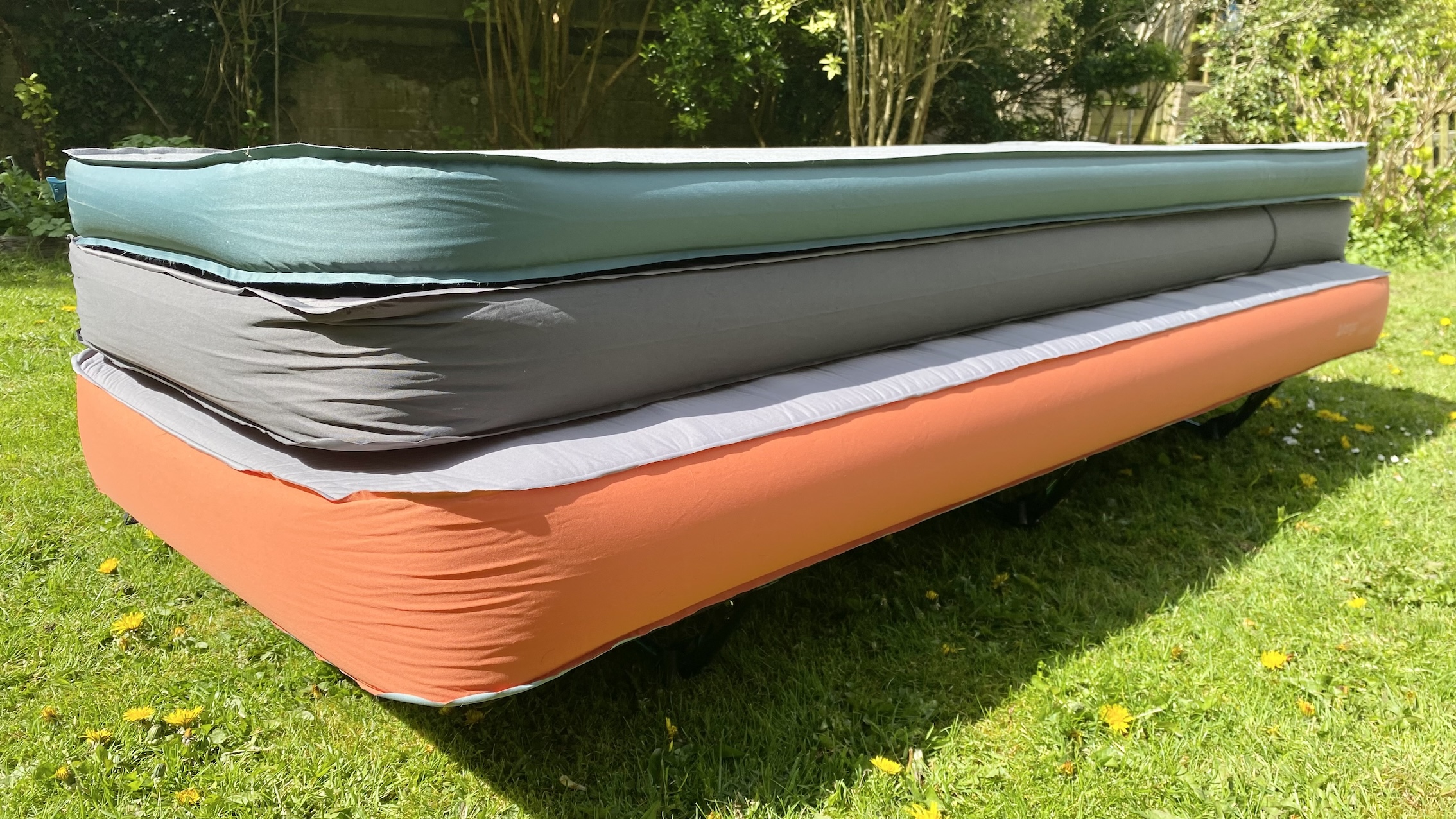
From top to bottom: Quechua Ultim Comfort, Coleman Supercomfort and Vango Shangri-La II Grande
Where a conventional air bed is constructed using a tunnel-type structure and a thin vinyl covering that bulges significantly at the sides while giving the sleeping surface a deeply pitted appearance that feels lumpy and uncomfortable, a self-inflating mattress has a plush, totally flat sleeping surface and usually much flatter sides. The material used is much thicker, too, and it’s more sturdy as a result.
Crucially, self-inflating air beds don’t produce that horrible bouncing sensation you get with standard air beds, and there are no squeaky ruffling noises when you get on and off. To all intents and purposes it’s like sleeping on your mattress at home, only without the monstrous weight.
All self-inflating mattresses are filled with a series of foam channels and it’s this system that helps them to self-inflate as soon as you unfurl the tightly-rolled bed and open the valve. Extra air can then be added using a pump or a good pair of lungs.
While most normal air beds are around 22cm (8.5 inches) in height, self-inflating mattresses range between 8cm in depth and a decidedly cosy 20cm. Nevertheless, the nature of the foam insert makes even an 8cm model feel perfectly comfortable, especially when married to a camping cot.
One of the very best things about self-inflating mattresses is that even in the very rare event that they’re punctured, the foam alone will provide enough emergency cushioning so your night isn’t totally ruined.
Self-inflating mattresses arrive either rolled up tight or folded in three. Yes, they are more bulky to transport than a normal air bed which doesn’t make them very suitable for backpackers, but they are worth their weight in gold for car campers and caravaners and a boon for those emergency moments when someone comes for a stay-over and you don’t have a spare bed.
Price and availability
The 8cm Quechua Ultim Comfort is only available from Decathlon, and you can snap one up for a very reasonable £90.
If you need a little more height, the 12cm Coleman Supercomfort retails for around £132 and is available from a variety of stores, including Wow Camping, Outdoor Gear and Outdoor Action.
Want even more comfort and width? Head for the 15cm Vango Shangri-La II Grande, priced at around £180 and available direct from Vango or John Lewis & Partners, Absolute Snow and Amazon.
Design & features
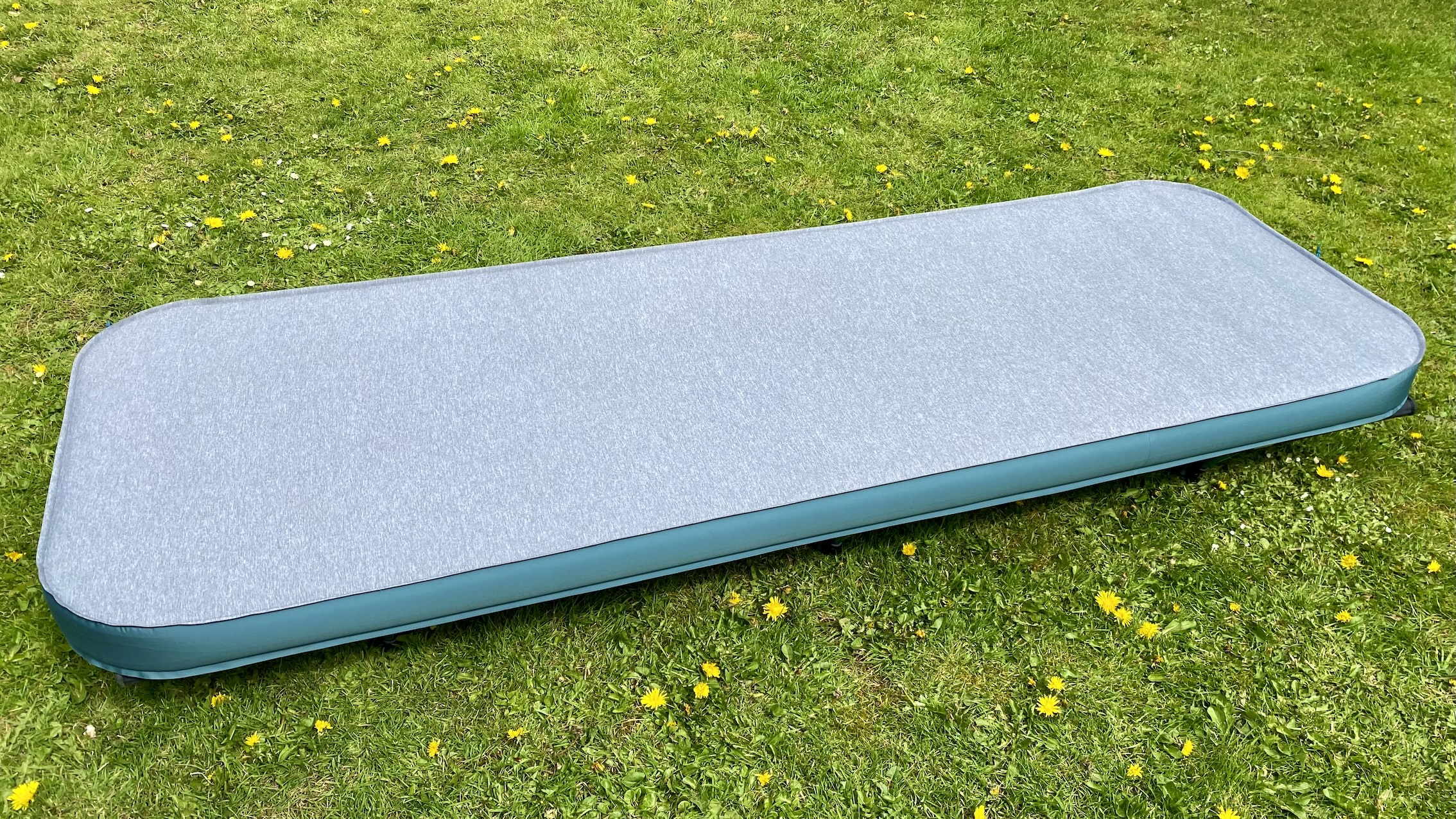
Quechua Ultim Comfort
First up is the slim but ample Quechua Ultim Comfort self-inflating mattress which you can read more about in my full T3 review. This foam-filled 8cm (3.14 inches) mattress seems awfully thin, but once inflated, it provides surprisingly excellent support across its 70cm width, especially when paired with a camping cot.
At 200x70x8cm, this mattress is of average size for a single and more than adequate in length for a six-footer. The Quechua weighs a relatively svelte 2.9 kilos and comes in a rectangular bag that measures 72x50x11cm. Its 70cm width, meanwhile, provides plenty of space for side sleepers.
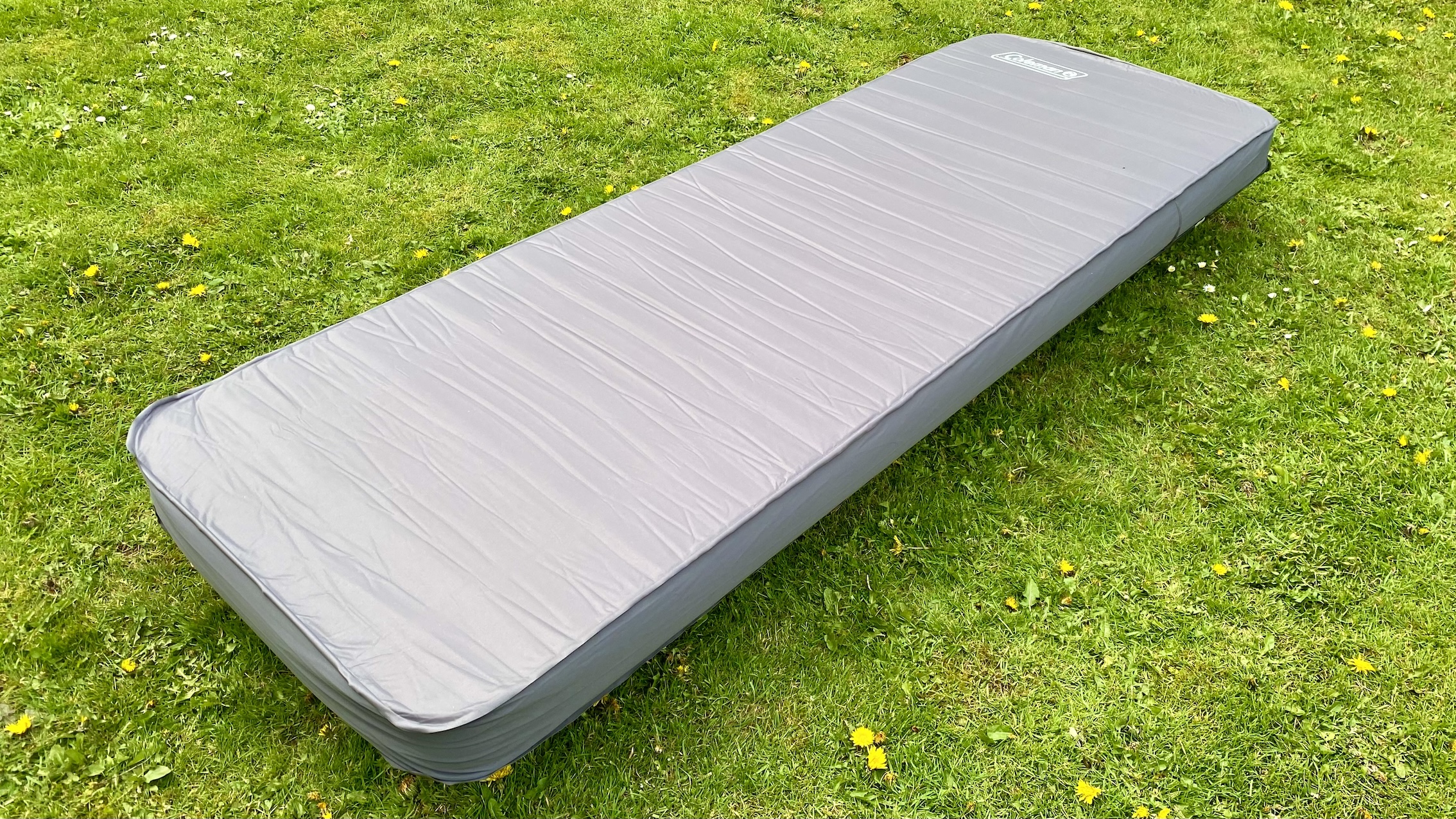
Coleman Supercomfort
At 12cm (4.72 inches) in height, 200cm in length and 68cm in width, the Coleman Supercomfort ticks all the right boxes since it’s thick enough to use directly on the floor and perfect for turning any camping cot into a luxury bed. Although its width is 2cm shy of the Quechua above, it doesn’t make that much difference when sleeping on it.
Yes, another 2cm would have been handy, but it’s not a deal breaker, in my opinion. The Coleman weighs in at 3.3kgs which is too heavy and bulky for backpackers but a boon for any other form of outdoor sleeping that involves vehicular transport.
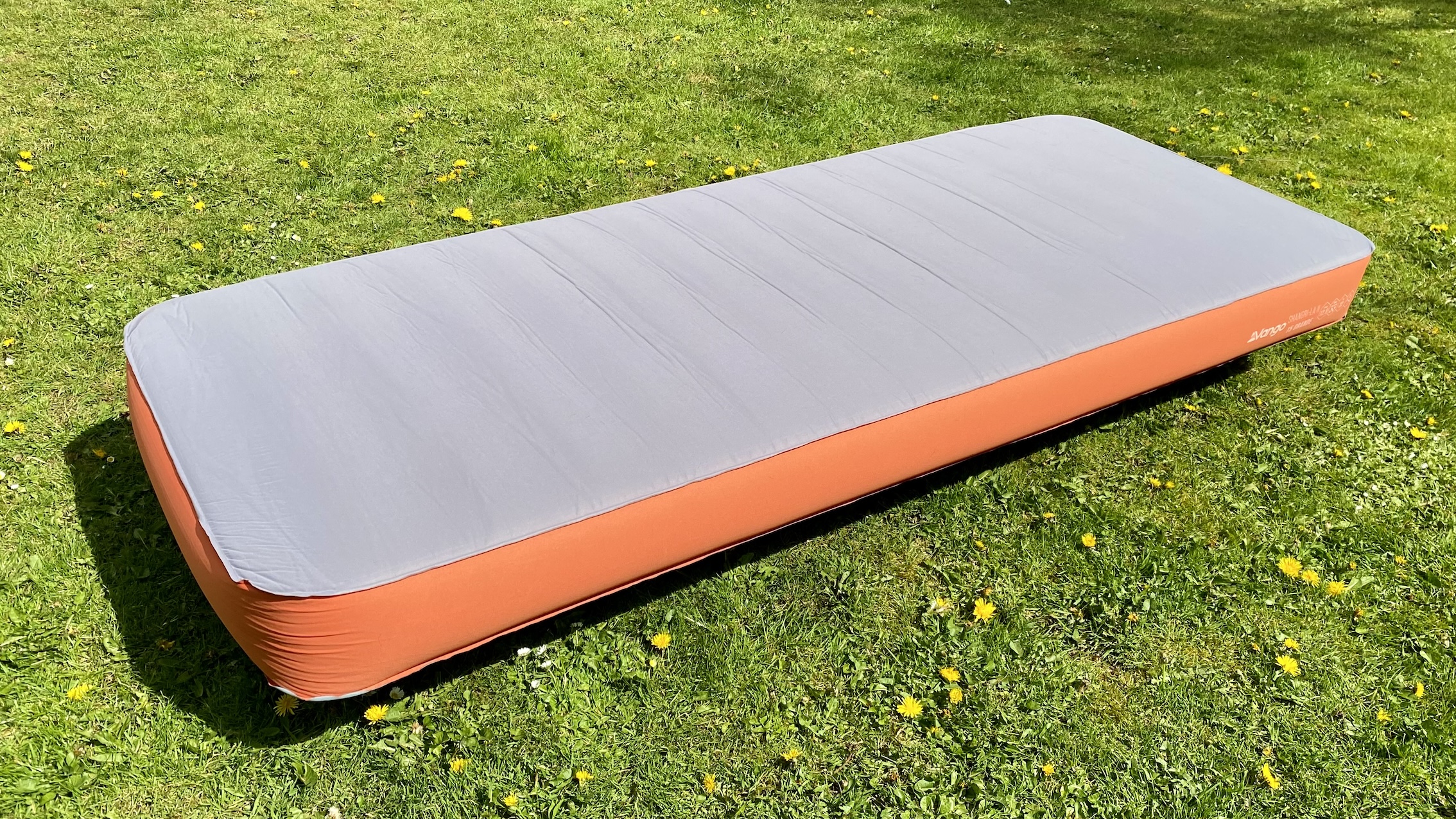
Vango Shangri-La II
If the depth of the mattress is of prime importance, the foam-filled Vango Shangri-La II 15 Grande is definitely your best choice. At a substantial 15cm (6 inches) in height – among the tallest available – this bed is exceedingly comfortable with the right amount of air pressure applied.
However, when lying on its totally flat and luxurious surface, the Vango bulges outwards a bit, and while its polyester material is of much better quality than most standard non-foam airbeds – it uses lighter-weight TPU fabric lamination in its construction – its sides might not be robust enough to ward off some sharp objects.
Put another way; I would be cautious about allowing dogs on it lest a claw penetrates the side fabric. At 4.35kgs, the Vango is far too heavy and bulky for backpacking but perfect for car camping, caravanning and use at home as an emergency bed.
Inflation and deflation process

Quechua Ultim Comfort on Helinox Cot One Convertible
Unlike some self-inflatable mattresses that have just one basic two-way valve, the Quechua Ultim Comfort has two valves – in and out – and that’s a bonus because the system is generally easier to use. All you do is unfold the mattress and pull the inlet valve tab out. You’ll hear a rush of air as it self-inflates and expands towards its maximum depth.
It takes about 40 seconds to fill, and the initial amount of air pressure may be enough for your needs if you’re of a lighter build. If you need more air, simply add a few puffs yourself or use an air pump. You want just the right amount of air to allow the mattress to mould to your body contours. If it’s too firm, it simply won’t feel as comfortable.
Deflation is easy, though it does require lying on it to expel as much air as possible, or it won’t fit back in the bag. In fact, I gave up trying to get it back into the bag and resorted to rolling it up into a tight bundle instead, which actually made it more transportable.

Coleman Supercomfort
One of the very best things about the Coleman Supercomfort is its filling method. Simply remove it from its pouch, unfurl it on the floor and flick the valve around with your finger so its internal foam filling can expand, drawing in the air in the process.
After about two minutes it will have reached its own self-filling capacity. However, because this mattress is deeper than the Quechua, it likely won’t be firm enough to sleep on unless you add a little more air.
This is where Coleman truly impresses because someone at the company came up with an ingenious way to fill the remaining air requirements using the carry bag. Yes, you read that correctly. When you receive this mattress, you’ll notice a strange-looking circular valve-type thing at the opposite end of the carrying bag’s main opening.
You grab the opening end of the bag and puff it up in the air with both hands, like a duvet. Now roll over the opening’s edges and attach the clips. You now have a balloon-type structure that you can attach to the bed using a bit of body pressure to inject as much extra air as you need. Very clever.
To pack it all up, squeeze out as much air as possible by rolling it up and kneeling on it. Then, use the compression straps to hold it all in place. Thankfully, Coleman had the presence of mind to provide a big enough bag to fit the mattress because its rolled-up form will always turn out to be larger in size than when you first took it out of the bag.
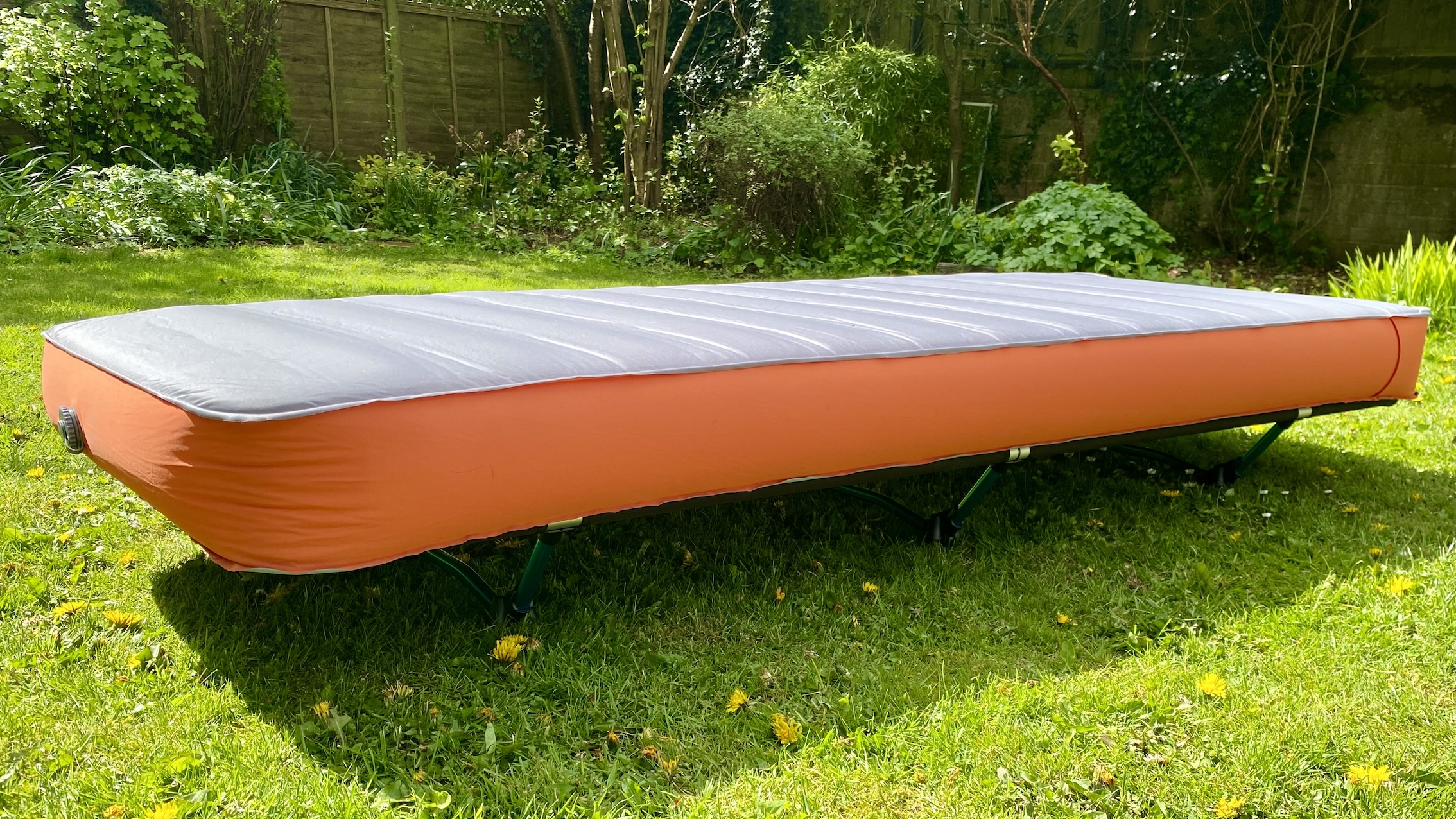
Vango Shangri-La II
Like the Coleman Supercomfort, the Vango Shangri-La II Grande self-inflates using a two-way Cyclone Valve, as Vango calls it. Simply unscrew the cap, and it will self-inflate in about 3 minutes.
However, its sheer volume means that you will need to use an air pump to add extra firmness and trying to find a universal pump that fits its oversized valve is like looking for a needle in a haystack (in the end, I resorted to my battery-powered Halfords pump).
You could try topping it up yourself by blowing into it, but you’ll likely get very lightheaded midway through the process. When it’s time to leave, roll up the mattress using your knees and body weight to expel the air and attach the compression straps.
Thermal resistance
The Quechua Ultim Comfort has a thermal resistance R-value of 8.6 which is perfect for all seasons, including winter use. It means that the mattress will resist colder temperatures around it and not transfer any chilly air to the occupant. That said, I would still advise putting an insulation sheet or blanket under it for peace of mind.
Like the Quechua, the Coleman Supercomfort sports very high thermal resistance that, according to Coleman, is ’useable in winter and sub-zero conditions’.
Vango doesn’t list a thermal resistance R-value for the Shangri-La II Grande, but its depth and series of foam channels should ensure enough warmth for much of the year.
Performance
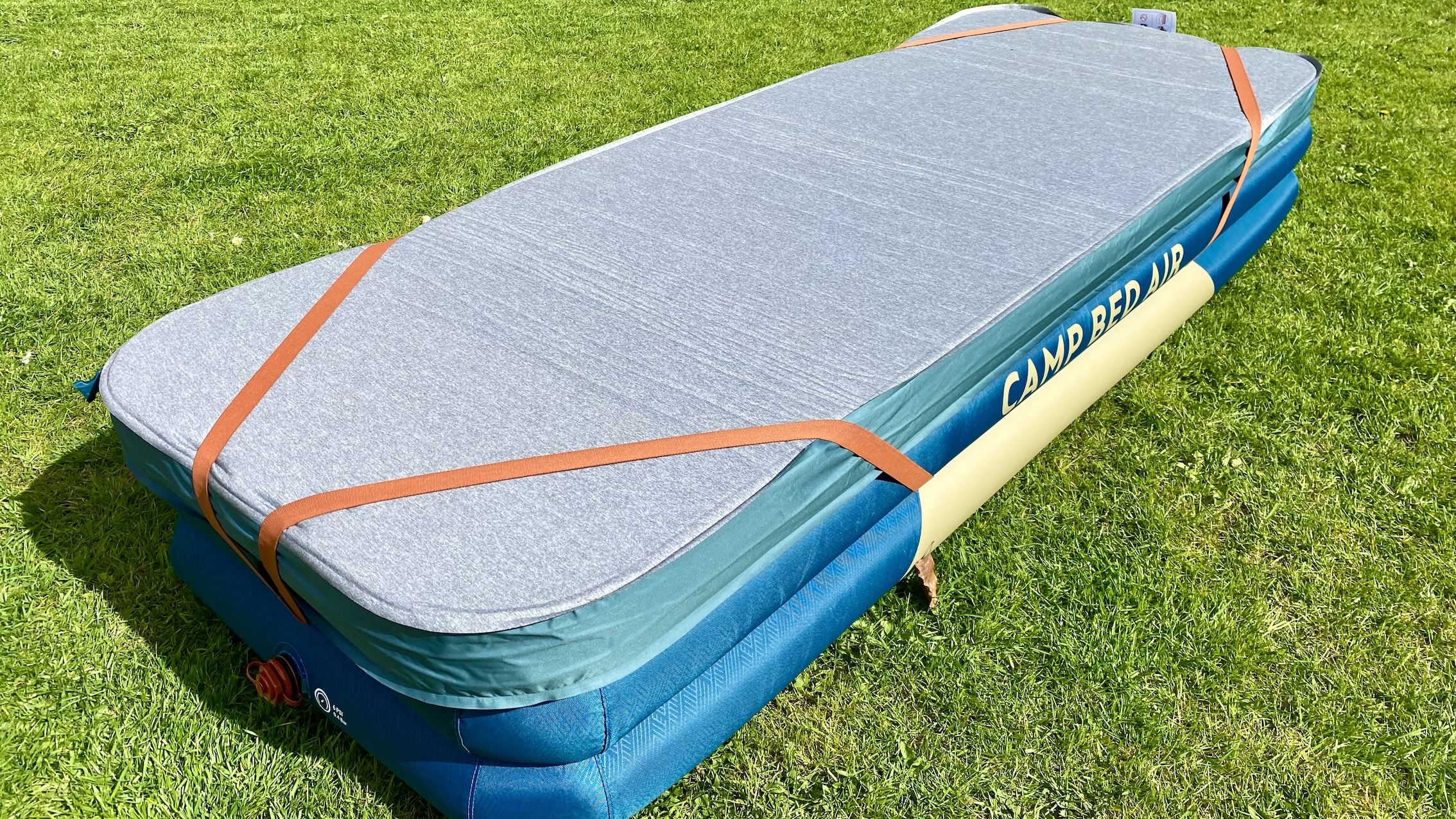
Quechua Ultim Comfort on the excellent Quechua Inflatable Camp Bed Base
I loved the Quechua Ultim Comfort’s smooth, flat and velvety finish which makes it a pleasure to sleep on using just a sleeping bag. And it was absolutely perfect when used with either the innovative Quechua Inflatable Camp Bed Base or the amazingly light but sturdy Helinox One Cot Convertible I mentioned in my recent three-way Camping Cot Showdown.
I was also impressed by the clipped straps on the side that allow you to join two beds side by side without them slipping apart. However, if used directly on the floor, I suspect that heavier users will find that this bed’s 8cm depth is simply not enough.
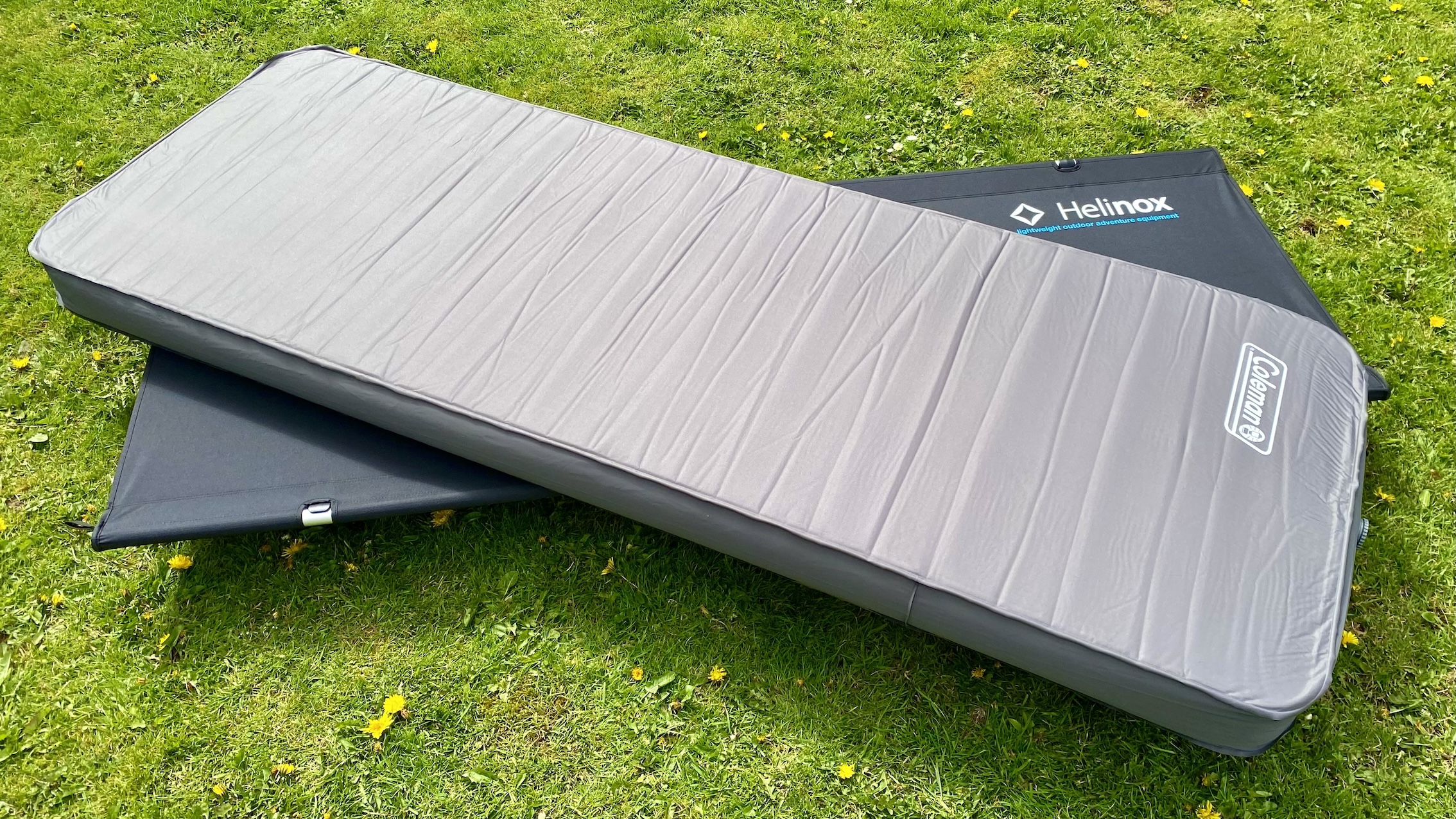
The Coleman Supercomfort is a perfect match for the ultra lightweight Helinox Cot One Convertible camping cot
That brings me to the moderately deeper Coleman Supercomfort. You can’t go wrong with anything under the Coleman brand, and, true to form, the US-based company has excelled with the design of the foam-filled Supercomfort. I thought the Quechua Ultim Comfort was comfortable enough, but I’ve got to say that the 12cm Coleman’s extra 4cm depth definitely makes a big difference, especially if you plan to sleep on the floor.
This mattress is supremely comfortable, and once again, I love the totally flat bed-like surface and soft, luscious covering. It doesn’t bulge too much at the sides either, which makes it feel more robust against puncturing. Also, it was a perfect fit for the Helinox Cot One Convertible and OEX Ultralite camping cots.
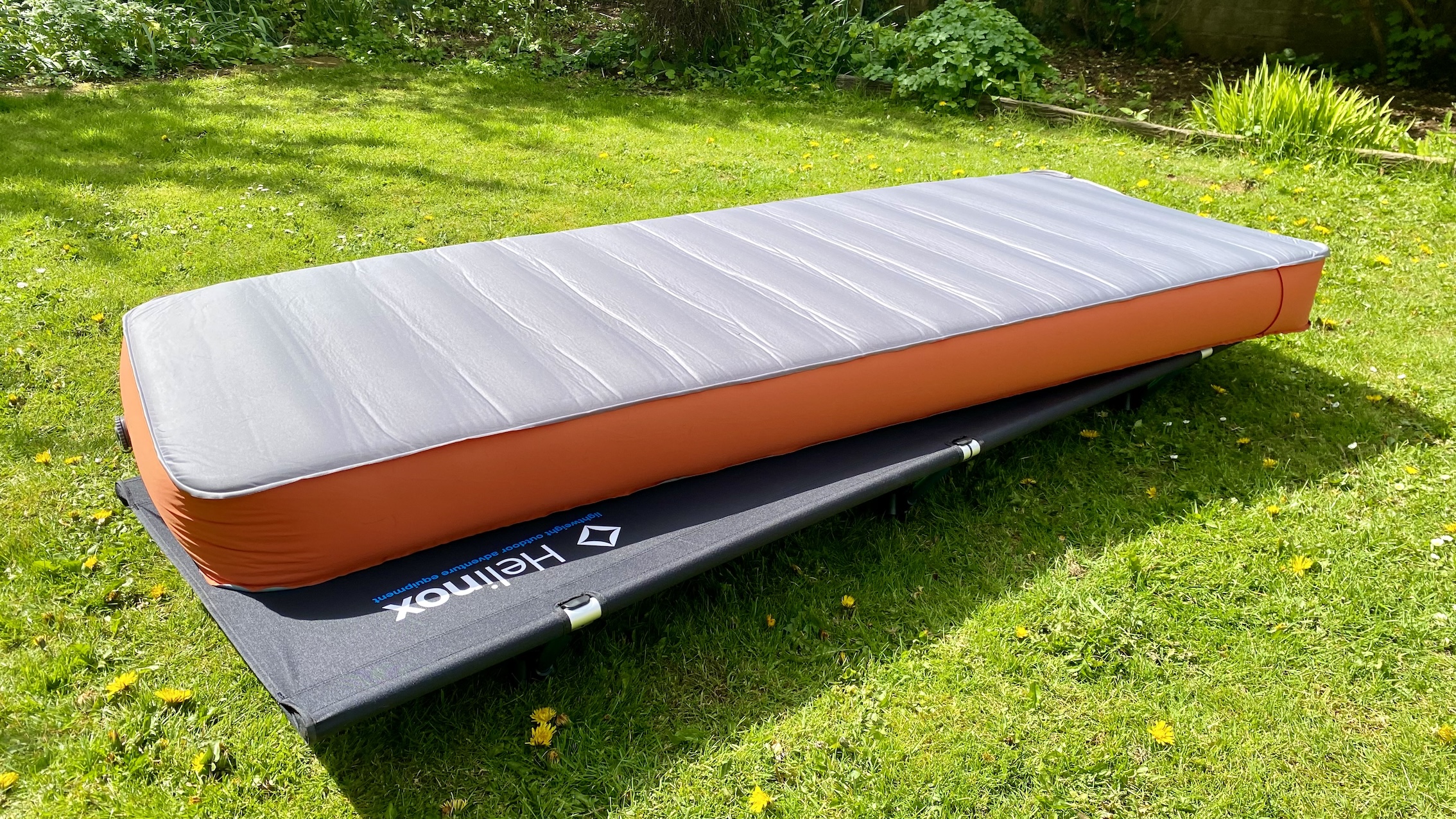
Shangri-La II Grande on the Helinox Cot One Convertible
Of the three self-inflating mattresses in this comparison showdown, the Vango Shangri-La II Grande is arguably the best model to use directly on the ground. While it works just fine on a standard-size single camping cot, its extra width does hang over the sides a bit. At 2m in length and a substantial 76cm in width (6cm wider than the norm), this mattress provides oodles of plush comfort for a peaceful night’s sleep no matter how large you are. You’ll adore its soft and smooth elastic yarn sleeping surface, but just be wary of dogs possibly puncturing the sides.
Which should I buy?
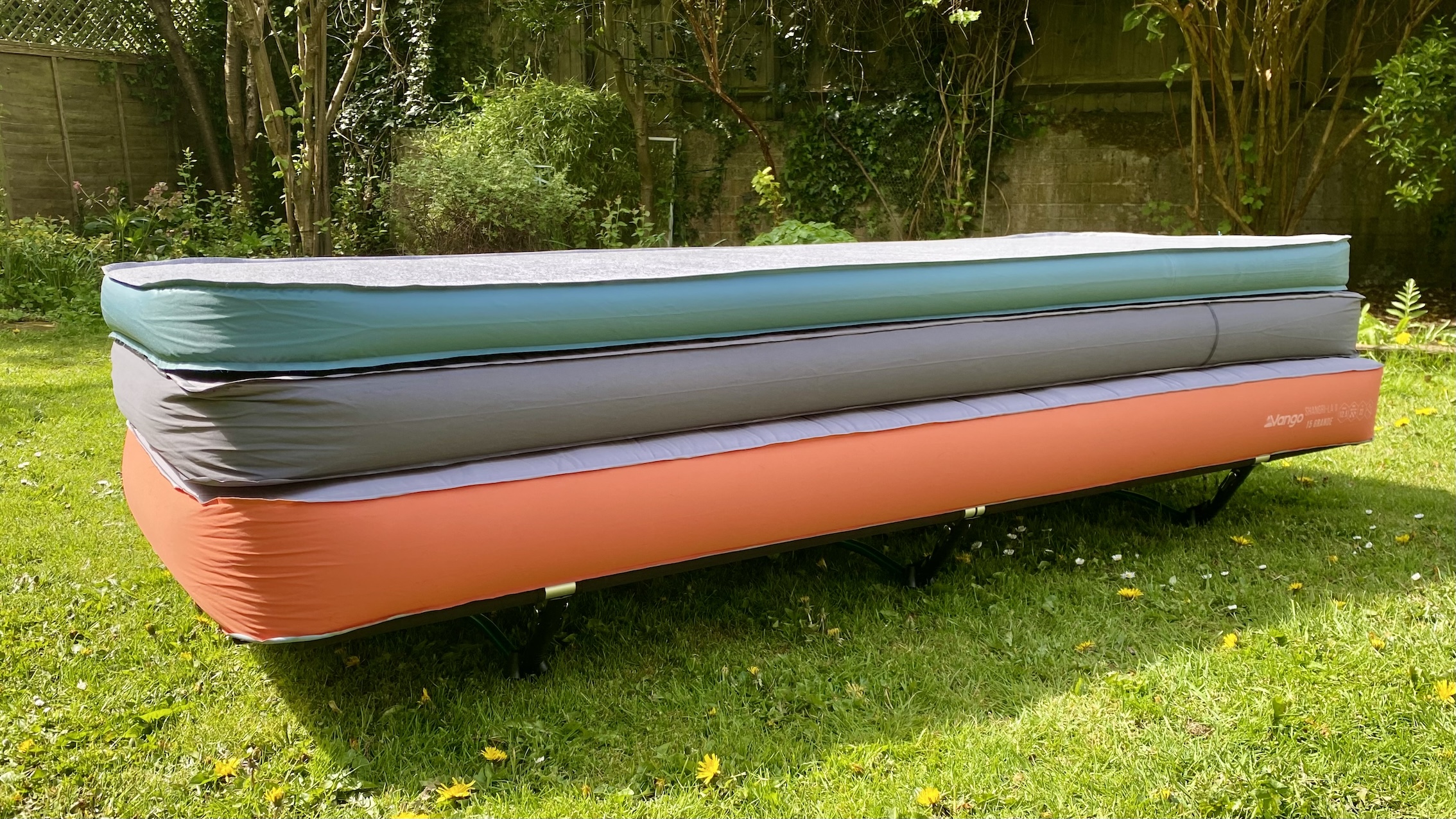
Our number one choice goes to the Coleman Supercomfort for several reasons. Its 12cm depth provides ample support and impressive levels of comfort as long as it’s not over-inflated. Granted, its 68cm width may be a tad too narrow for some, but it’s an incredible match for the best-in-class Helinox One Cot Convertible and cheaper OEX Ultralite Folding Cot we tested in our three-way camping cot showdown. It’s also a perfect self-inflating mattress for floor use. And there’s no denying the brilliance of Coleman's clever carry-bag-cum-air-inflating system.
Our second favourite mattress is the 15cm Vango Shangri-La II Grande. This sterling bed provides supreme comfort for any size of the user, and – at 76cm, it’s wider than almost every other single self-inflating mattress on the market and quite a bit deeper, too. If you want the ultimate in camping comfort, whether sleeping on the floor or on a camping bed like the Helinox Cot One Convertible or Quechua Camp Bed Base, the Vango Shangri-La II 15 Grande provides proper bed-like comfort.
Finally, if you want to keep packing weight to a minimum and already have a camping cot or similar, the 8cm Quechua Ultim Comfort is an ideal third-place choice. Its 70cm width and 2m length are great for side sleepers and a perfect size for most users. It’s brilliant when used with Quechua’s excellent Inflatable Camp Bed Base and not at all bad when used directly on the floor—though heavier users may beg to differ.
Derek (aka Delbert, Delvis, Delphinium, Delboy etc) specialises in home and outdoor wares, from coffee machines, white appliances and vacs to drones, garden gear and BBQs. He has been writing for more years than anyone can remember, starting at the legendary Time Out magazine – the original, London version – on a typewriter! He now writes for T3 between playing drums with his bandmates in Red Box (redboxmusic).
-
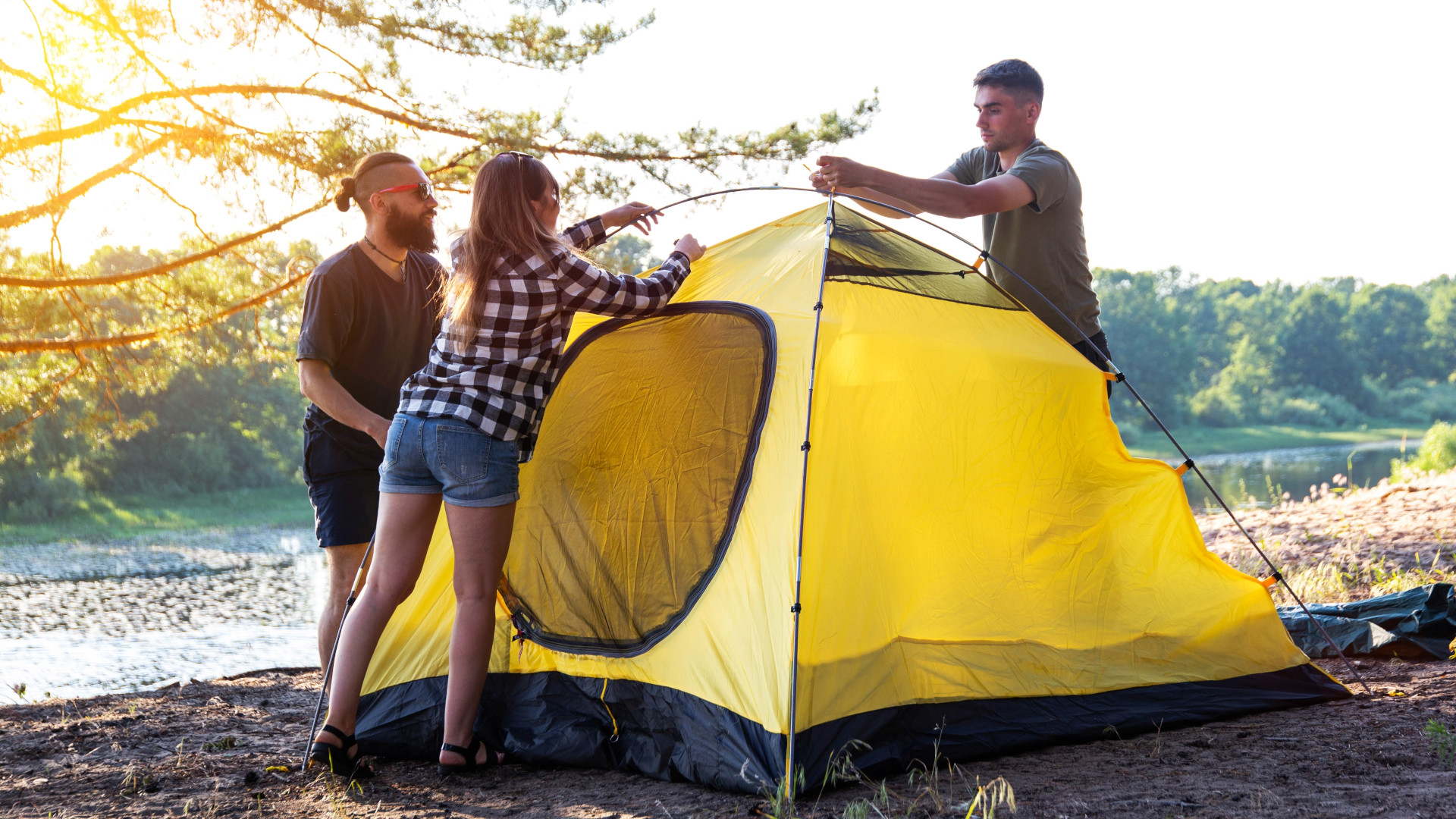 5 common camping mistakes and how to avoid them for a relaxed outdoor escape
5 common camping mistakes and how to avoid them for a relaxed outdoor escapeWhether you're a seasoned camper or a complete newbie, don't overlook these common blunders
By Bryony Firth-Bernard Published
-
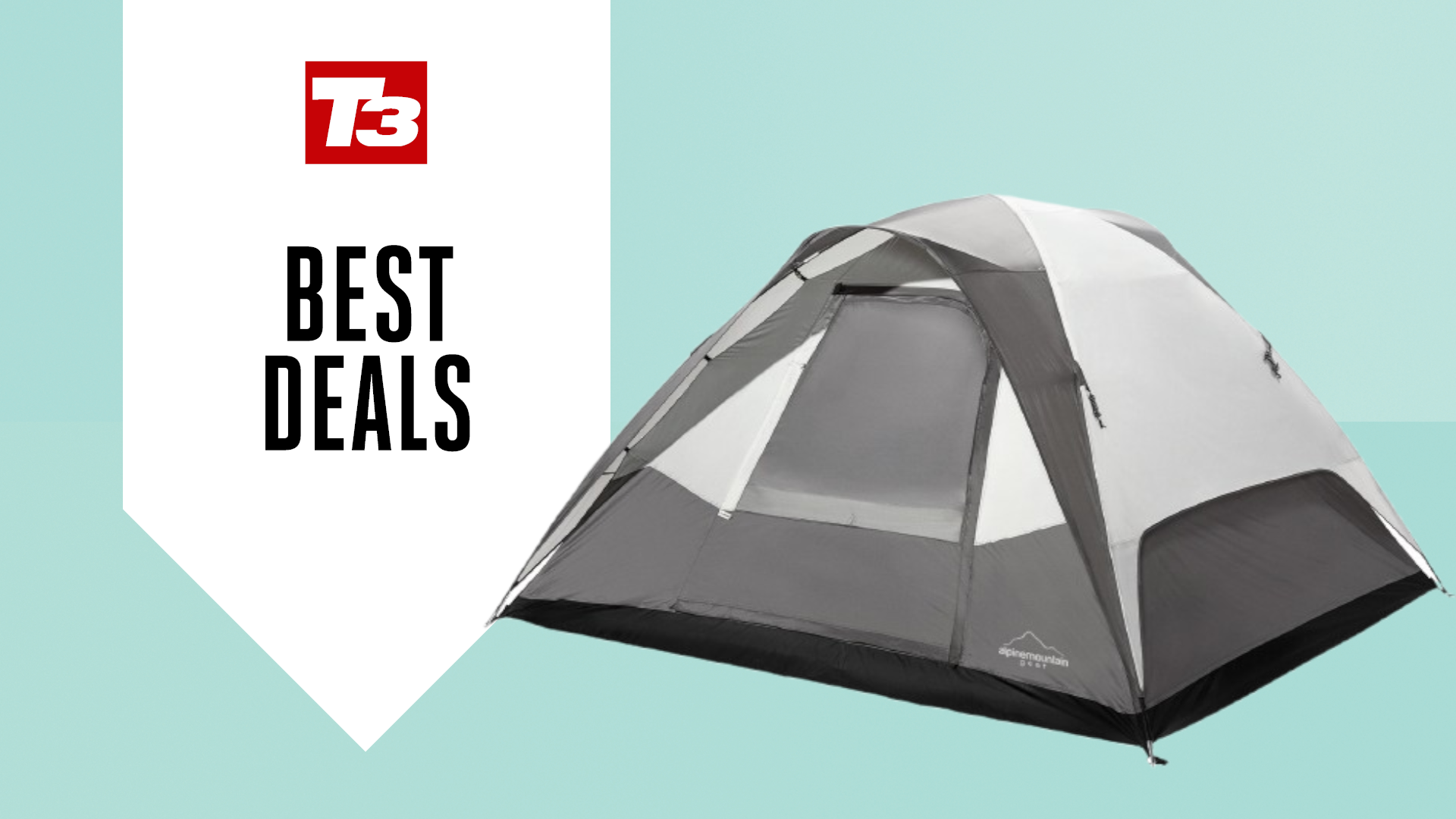 REI is selling this 6-person tent for just $83 – grab it before it's gone!
REI is selling this 6-person tent for just $83 – grab it before it's gone!This 3-season tent has almost 60% off
By Bryony Firth-Bernard Published
-
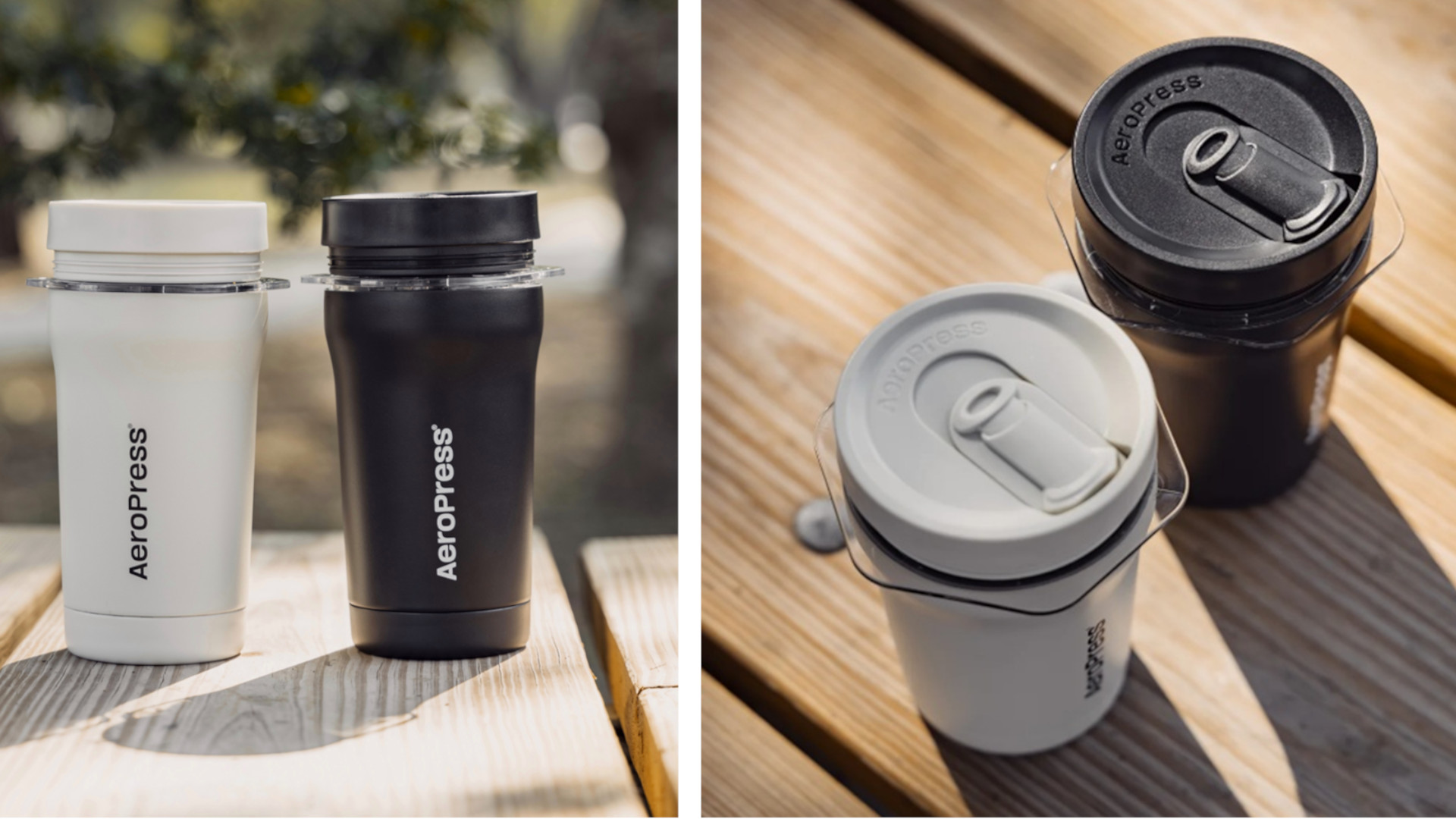 The AeroPress Go Plus is the gadget I need for my next outdoor adventure
The AeroPress Go Plus is the gadget I need for my next outdoor adventureWhether you’re off camping or heading on a hike, the new AeroPress Go Plus lets you enjoy great coffee on the go
By Bryony Firth-Bernard Published
-
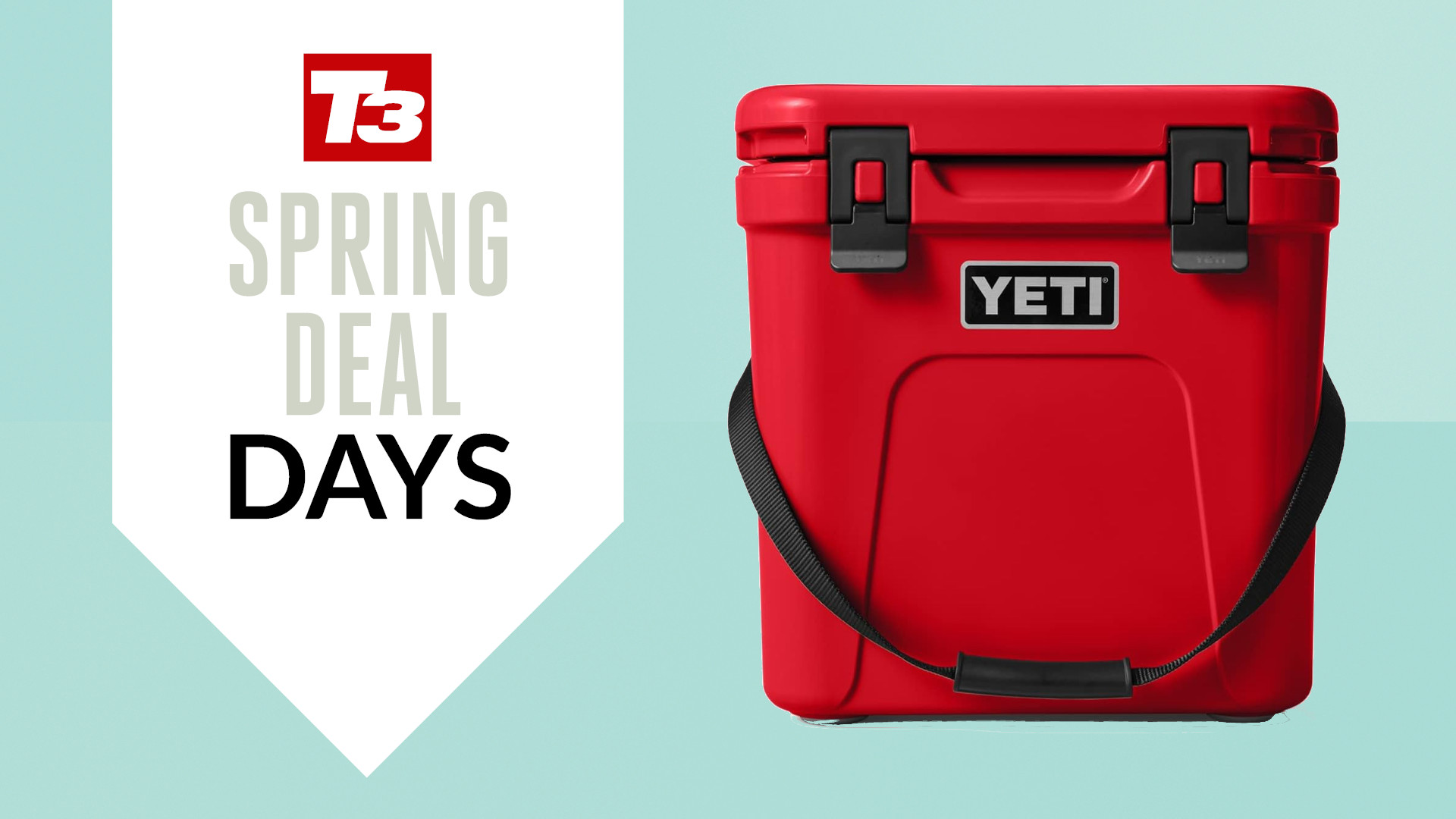 YETI has discounted a ton of its best-selling coolers and tumblers in Amazon’s Big Spring Sale
YETI has discounted a ton of its best-selling coolers and tumblers in Amazon’s Big Spring SaleJust in time for the warmer months
By Bryony Firth-Bernard Published
-
 GoPro's latest flagship action cam just got a major price cut in Amazon's spring sale deal
GoPro's latest flagship action cam just got a major price cut in Amazon's spring sale dealYou can pick up the Hero 13 Black with almost 20% off
By Lee Bell Published
-
 How to sleep comfortably while camping, according to an outdoor expert
How to sleep comfortably while camping, according to an outdoor expertGet a restful night’s sleep under the stars with these simple steps
By Bryony Firth-Bernard Published
-
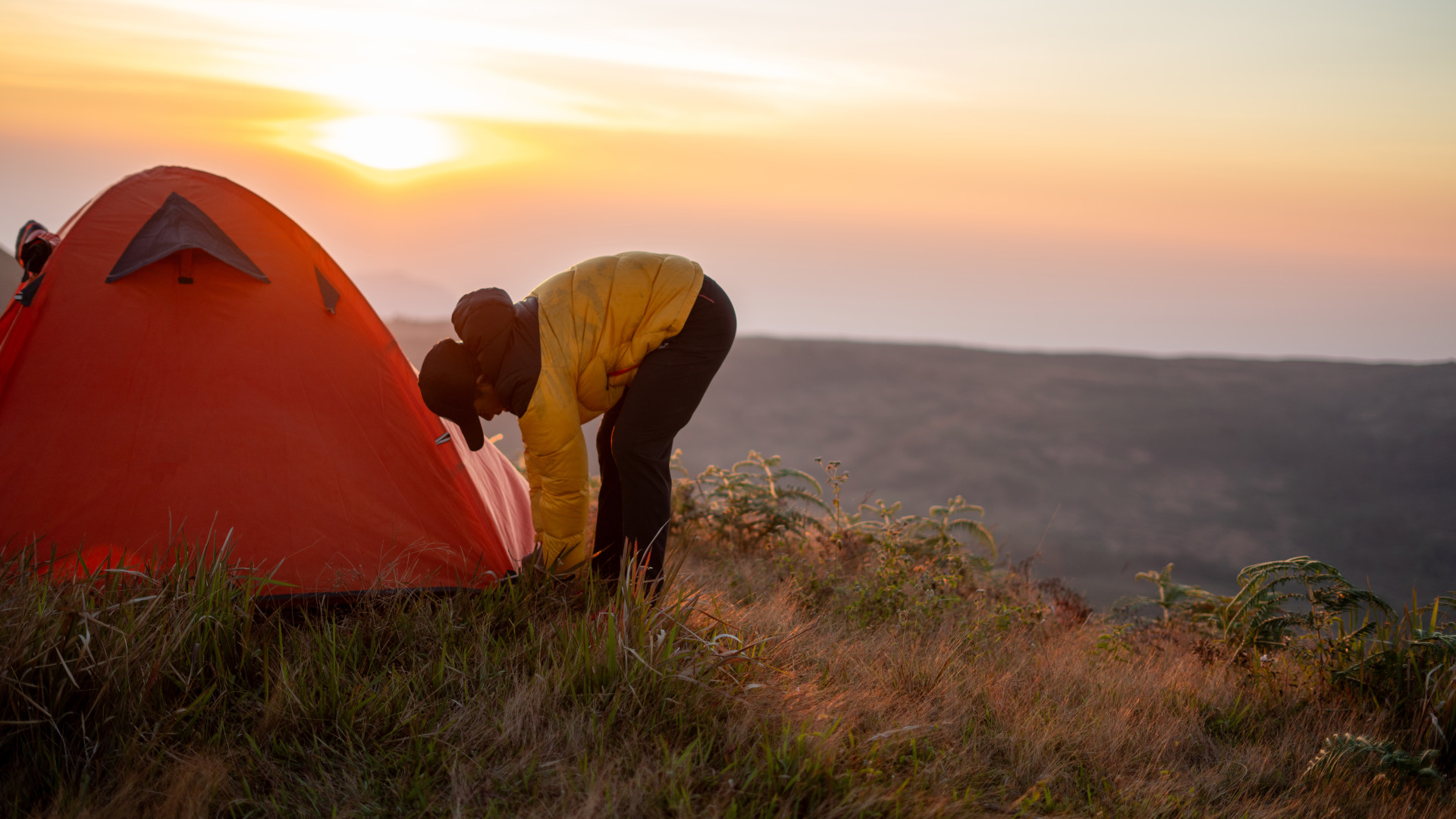 No stupid questions: which direction should you pitch a tent?
No stupid questions: which direction should you pitch a tent?An outdoor expert reveals all so you can have a better night's rest
By Bryony Firth-Bernard Published
-
 How to pack your rucksack for a hiking or camping trip
How to pack your rucksack for a hiking or camping tripPack properly, save space and get easier access to the items you need the most
By Bryony Firth-Bernard Published

